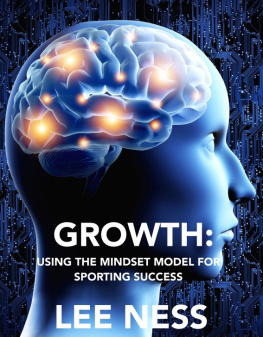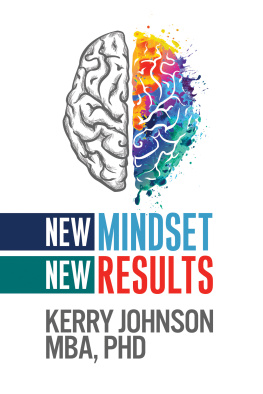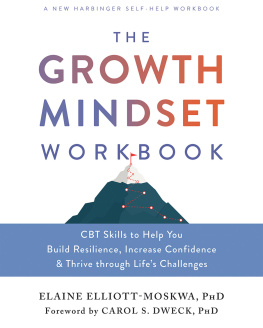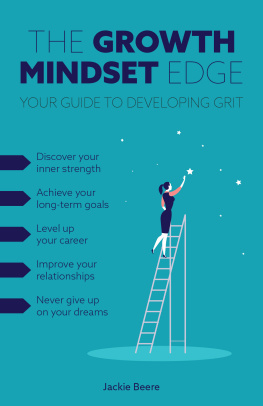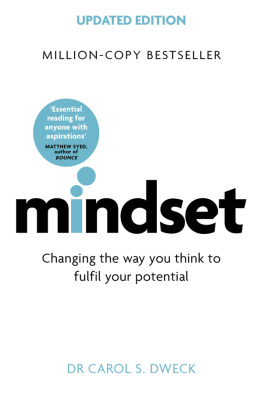Copyright 2014 by Lee Ness
Smashwords Edition
Published by Lee Ness
All rights reserved
Author sWebsite
leeness.co.uk
Contents
CHAPTER ONE
Introduction
As a coach, I used to beable to tell which athletes were going to be really good. Whetherit was football or track and field, I could tell. There wassomething about them but it wasn t the obvioussigns. Yes, of course they were athletic in the true sense of theword. They had great balance and movement. They were the kinds ofkids who would be good at any sport. Usually. Not always.Sometimes, they weren t that kid, they were alittle awkward and graceless. But there was something that madethem stand out.
It was usually in theirattitude. Not just how they approached me. It was how theyapproached the sport. For one thing, they played without fear.They had ago . If I threw them into a game,they played. It didn t matter how good the other kidswere, or that they were struggling. They didn t shyaway from the challenge. If they joined the sprint group at theathletics club and I started them off in a warm up, the drills canbe quite difficult, new movement patterns that theyhaven t done before. But they wouldjust stand next to someone and copy them. Again, they would have ago .
The other thing was thatyou could see them learn. You could see their brain working when acoach spoke. Processing the information. Turning it over in theirhead. Trying this new information out in their mind. Sometimes theywould close their eyes, visualising a move they venever done before. Or making small movements to try to preparethemselves for what they would be about to do.
The other thing was thatthey were trying to be as good, or better, than everyone else. Itwasn t that they were trying to be topdog. Far from it. These were the kids that came to me because theywere too good for wherever they had come from andweren t learning anything there. Theydidn t want to be top dog, they wantedto be somewhere that they had to strive to be. It was neverexpressed that way of course, but it is what I saw.
Eventually, I realisedthat I was wrong. I realised that those people who think they couldtalent-spot this way (and many people do - although they mightdescribe it differently), and I was among them, were mistaken. Iwas lucky in that I would never filter anyone out to focus onthe talented ones, so my mistakedidn t negatively affect anyone toobadly.
My mistakewasn t with the kids that seemed tobe talented , althoughI m sure I hindered some of themand allowed them to drift from the development path they were on.It was with everyone else. What I didn t realisewas that the only difference between these so-called talented kids was in their mindset. Theyhad a growth mindset where others had a fixed mindset. Until Iwrote my book, The Sports Motivation Master Plan, Ididn t understand this for what it wasand that their mindset could be developed into a growth mindset byhow I spoke to them, how their parents spoke to them and what wassaid. Even when I wrote the book, it was a small, but important,part of a chapter.
This mini-book is based ona series of articles I wrote of Jimson Lee at speedendurance.com . He asked me towrite something on how to deal with poor performance and I knew thesubject was too big to write in one short article. Even then, onceI d written the articles, it wasimmediately obvious to me that I wanted to write more.
The growth mindset is thebiggest performance enhancer there is. Will a growth mindsetguarantee success? No. There are too many other factors involved.But without it will success be all but impossible? More thanlikely. And success in anything is difficult enough as itis.
This mini-book willdescribe the mindset, how to use it as an athlete, as a coach andas a parent/guardian.
CHAPTERTWO
Fixed and GrowthMindset
To understand theimportance of a person s mindset and theprofound effect it can have, it is worth taking some time tounderstand the background. As Jennifer Aniston would say, here comes the sciencebit.
Professor Carol Dweck PhDis a world-renowned Stanford University psychologist who haswritten a number of articles and books. She has been interested inwhat motivates people since she was 15 years old and during a studyof what makes people successful, she made the breakthrough whichled to her book Mindset: The New Psychology of Success .During the study, involving High School Fifth-Graders, the 400students were given an easy IQ test. They were randomly selectedinto two groups and each group were given simple but specificpraise. Group 1 were told Wow, you got [x many] right.That s a really good score. You mustbe smart at this . Group 2 were told Wow, you got [x many] right.That s a really good score. You musthave worked really hard . Nothing more.
They were then offeredanother task but had two options.
They could take a hardertest with the opportunity to learn and grow.
They could take a similartest, which played to their strengths and they were certain to dowell.
From Group 1 (The smart group) 67% chose to take Option 2, the easy task. From Group2 (workers), 97% chose the harder task.
The smart group had beenpushed into a fixed mindset, rejecting a challenging new task thatthey could learn from because they did not want to do anything thatwould expose flaws or damage their perception of their talent.Success in the test meant they were intelligent, because that iswhat they had been told. Therefore anything less than success, in avery simple logical equation, meant they were somehow lacking. Thework group on the other hand wanted the task they could learn from.They did not see greater difficulty as a reflection of theirintellect, they simply thought they had to put in moreeffort.
Later, both groups weregiven a tough, almost impossible, test. Group 2 worked harder, forlonger and enjoyed the test. Group 1 got frustrated and gave upearly. In the first test, both groups enjoyed the test because itwas within their capability. The worker group also enjoyed thechallenge of the second test, but in stark contrast, the smartgroup no longer had any fun.
So far, so strange. Butthe test didn t stop there. The kids were thenasked to write a letter to their peers about the tests and includetheir test scores in the letter. Forty percent of the kids fromthe smart group, the ones praised for their ability, lied about theirscores and inflated them to look more successful.
Then, a third test was setat exactly the same difficulty (easy) as the very first one. Group1, the smart group, did worse than on their first test and reduced overallperformance by 20%. Group 2 did better than the first test andimproved performance by 30%. This is a 50% performance swing from asingle sentence of praise!
You must be smart at this versus You must have workedreally hard .
The implications of thisintervention could not be more profound, for parents, teachers,coaches and athletes.
You can quickly see whythis discovery led Dweck down the road of researching this modelfurther. The model she settled on was that people have one oftwo mindsets . (I apologise for thegross oversimplification of Dweck s work. Read thebook). They will either have a fixed or a growth mindset. Even the original studythat prompted this one, on lab animals, is quite profound. Even labanimals were found to exhibit learned helplessness where they didn t do somethingthey were capable of because they had given up from repeatedfailure.
For a long time (and in alot of cases, this is still present now), people believed thata cure forhelplessness and failure was a string of successes. Dweckdidn t believe this to be the case.She felt that most important element lay inpeople s belief of why they had failed.The difference in response, helplessness or a determination tomaster new things, was caused by either a belief in a lack ofability, or that they hadn t tried hard enoughrespectively. It is easy to see how these beliefs would drive theresponses that Dweck observed.
Next page
